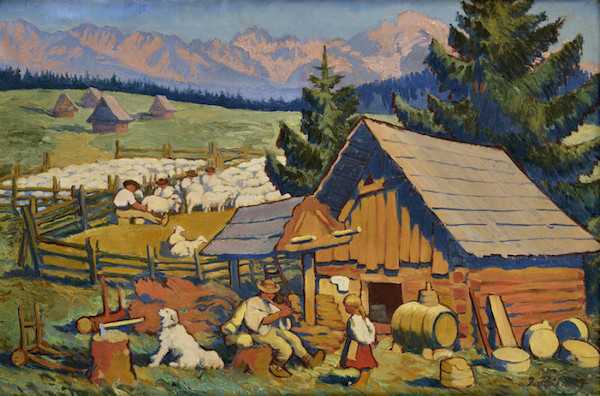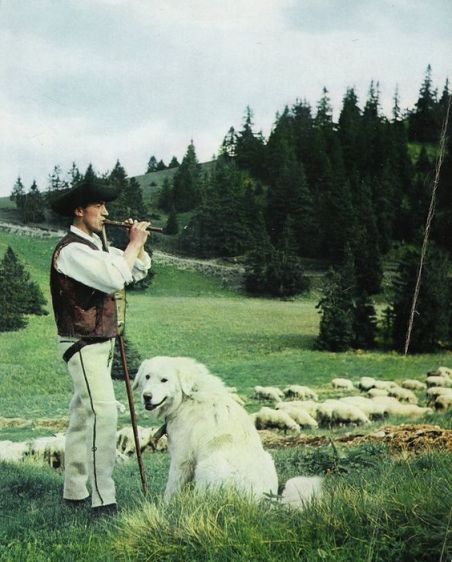
There is a small, but heavily built breed of horse known for its tremendous endurance and hardiness. Called the Huzul, or Hucul, the horse was used to pull timber in and out of otherwise inaccessible forested areas of the Carpathian Mountains. It joins the mountain sheep as a native breed crucial to the ancient traditions of Slovak alpine farming, an endeavor that formed the basis for the local economy. It was important.
The Slovak mountain people raised their sheep, of course, but they also protected their lands by belonging to the “Valassky  Opasok” which was, in essence, a shepherd military organization. At their side among the sheep and cattle, and while carrying out their defense service on the mountain meadows was the Slovensky Cuvac (pronounced chew-votch) also known as the Slovakian Chuvach or Tatra Chuvach. In the Serbo-Croatian language, čuvati means guarding, and the Slovak word, cuvat, means to hear.
Opasok” which was, in essence, a shepherd military organization. At their side among the sheep and cattle, and while carrying out their defense service on the mountain meadows was the Slovensky Cuvac (pronounced chew-votch) also known as the Slovakian Chuvach or Tatra Chuvach. In the Serbo-Croatian language, čuvati means guarding, and the Slovak word, cuvat, means to hear.
The ancestors of these large white livestock guardian dogs likely came to the area from Romania and the Balkans through transhumance, the practice of moving livestock from one grazing ground to another seasonally. By the 17th century, there was documentation of these dogs as valuable helpmates and companions. When tourists and visitors to the mountains became smitten with the dogs, they began to take some to the lowlands where the breed also grew in popularity.
When war came to the area, however, it changed everything.
The dogs came to be chained to tree or stakes and released only at night to patrol. This altered their behavior because trying to protect livestock to the length of the chain was frustrating to their instincts. They didn’t always get shade or water, and soon the dogs came to be mistrusted. This fear shaped some of the local laws including one that allowed any sheepdog more than 200 meters from a flock to be shot on sight. Then, as predation slowly began to disappear from European mountains and modern herding practices were instituted, the Cuvac was at risk of vanishing. What few dogs were left by the 1950s were bred carelessly. It was a bad time for the breed.
There were, however, dedicated admirers determined to save the Cuvac, and one of them was Dr. Antonin Hruza who, in cooperation with the veterinary school of Brno, championed the breed. Registered breeding was established in Czechoslovakia in 1929. The Club of the Breeders of Slovak Cuvac was established in 1933, and a written standard was established and approved in 1964.
The Slovac Cuvac was recognized by the United Kennel Club in 2006, and today, it’s currently registered with the AKC’s Foundation Stock Service.
Image: Painting by Jan Hála, 1927
